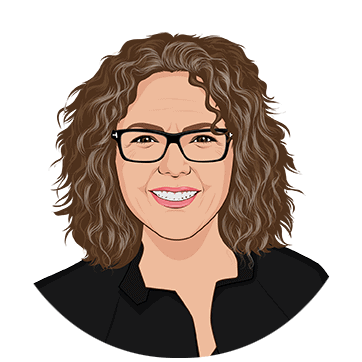The creative call is your place to shine! Be prepared, ready with all the resources you can gather to come across as clearly qualified to take on this project. Have a plan to share as you are actually the information provider vs. just gathering their information. Be the contributor of great insight as that is who they are looking to hire. Be ready!
Creative Calls
Bidding on a Project Without a Creative Call
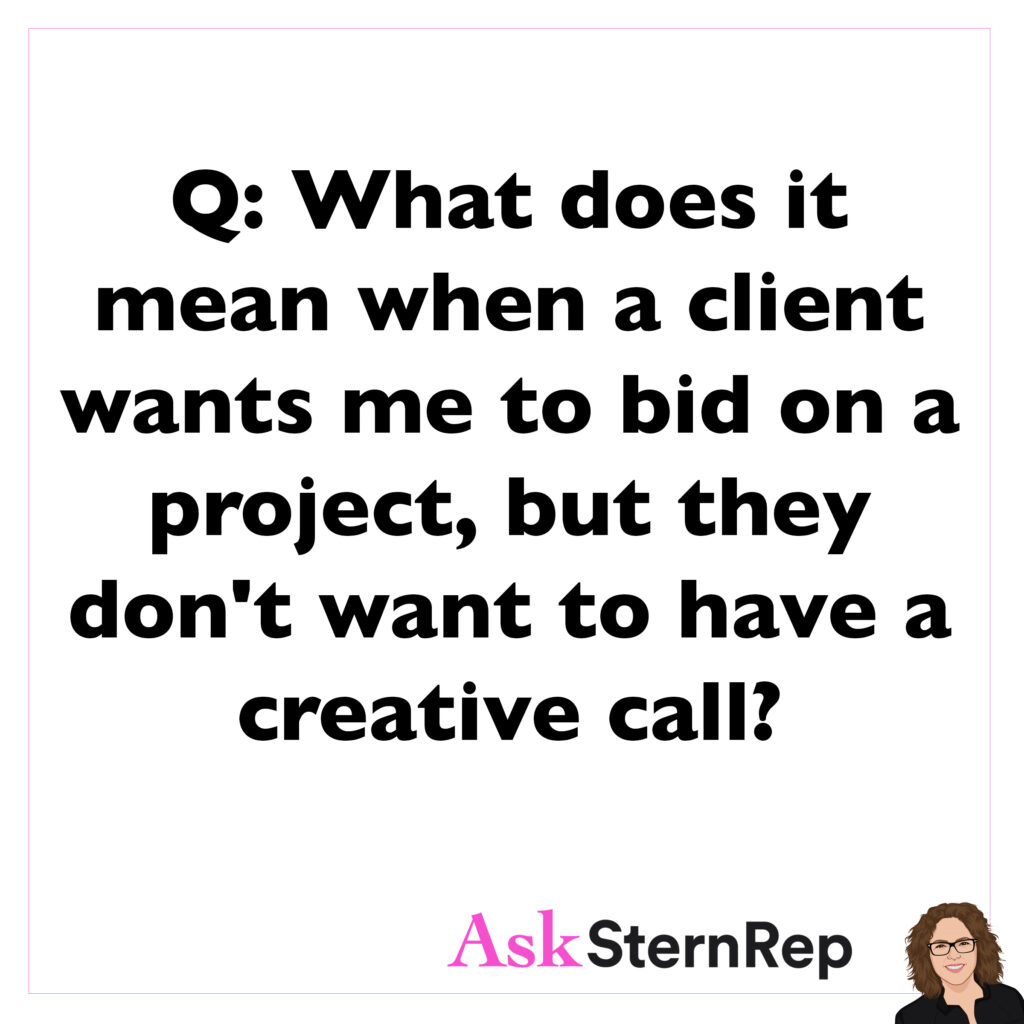
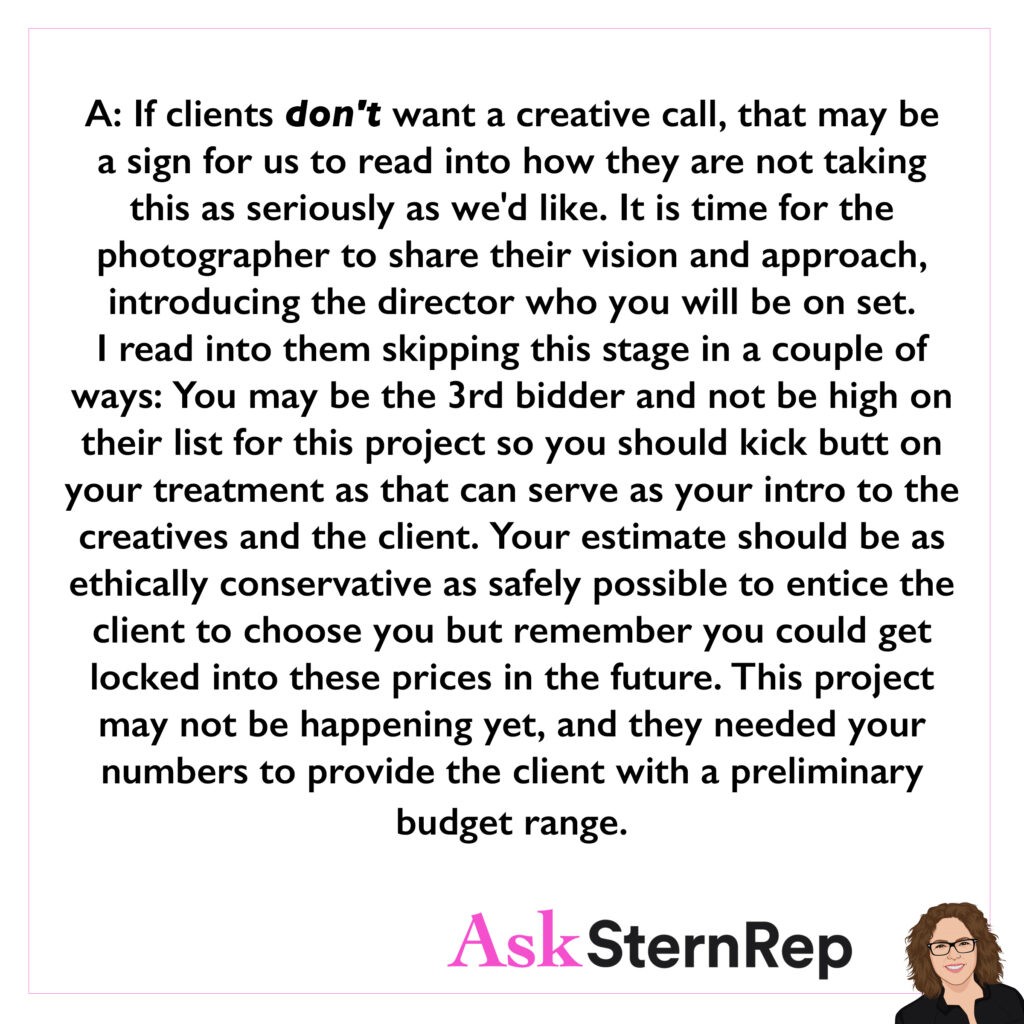
Q:
What does it mean when a client wants me to bid on a project, but they don’t want to have a creative call?
A:
If clients don’t want a creative call, that may be a sign for us to read into how they are not taking this as seriously as we’d like. It is time for the photographer to share their vision and approach, introducing the director who you will be on set. I read into them skipping this stage in a couple of ways: You may be the 3rd bidder and not be high on their list for this project so you should kick butt on your treatment as that can serve as your intro to the creatives and the client. Your estimate should be as ethically conservative as safely possible to entice the client to choose you but remember you could get locked into these prices in the future. This project may not be happening yet, and they needed your numbers to provide the client with a preliminary budget range.
Every Bid
Every bid inquiry requires its own fine-tuned strategy + gameplan.
The question is, which response will align with the client’s goals to get us the job while clearing up any potential usage terms that don’t protect you. We usually have to think quickly and make fast decisions following our instincts. Sometimes it’s in our best interest to wait for the details to be ironed out after the creative call. Strengthening our position first can allow us to make the changes we ultimately need to make.
Newer Photographers on a Creative Call
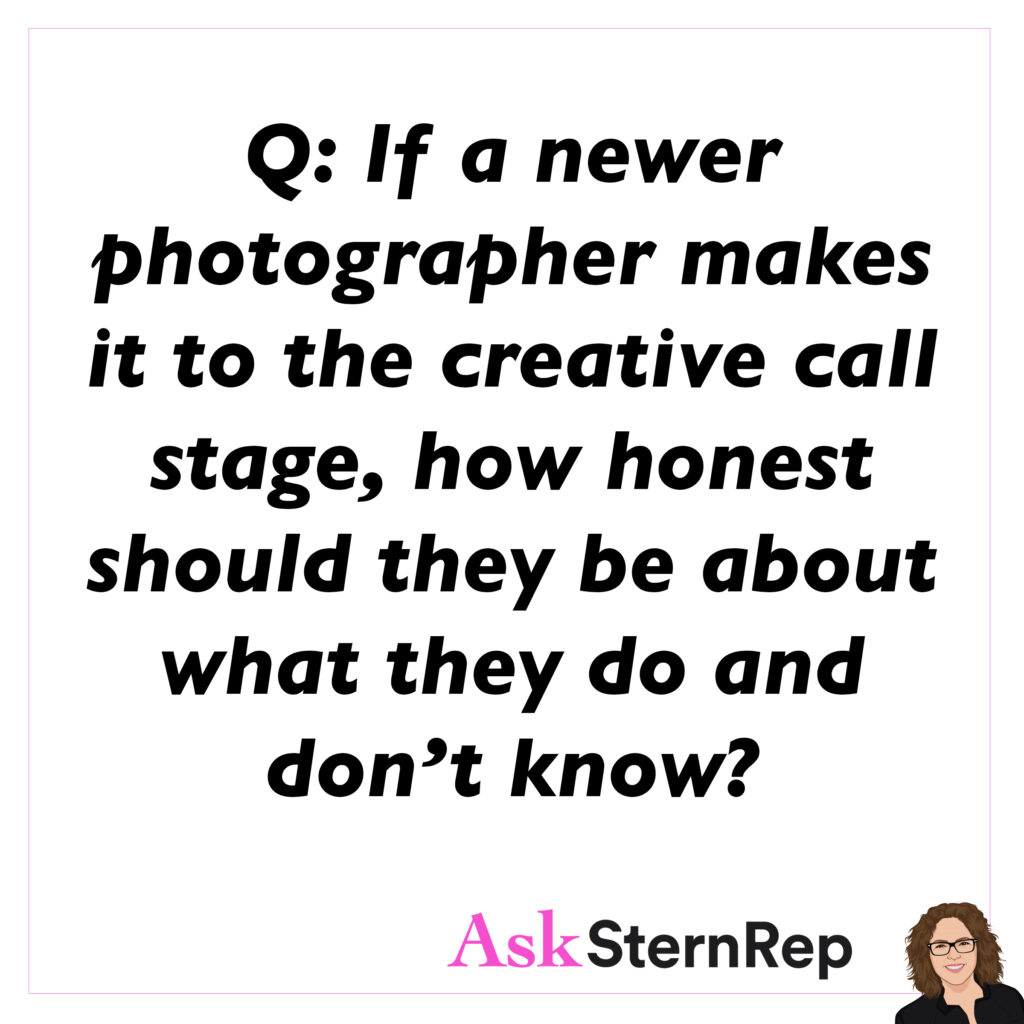
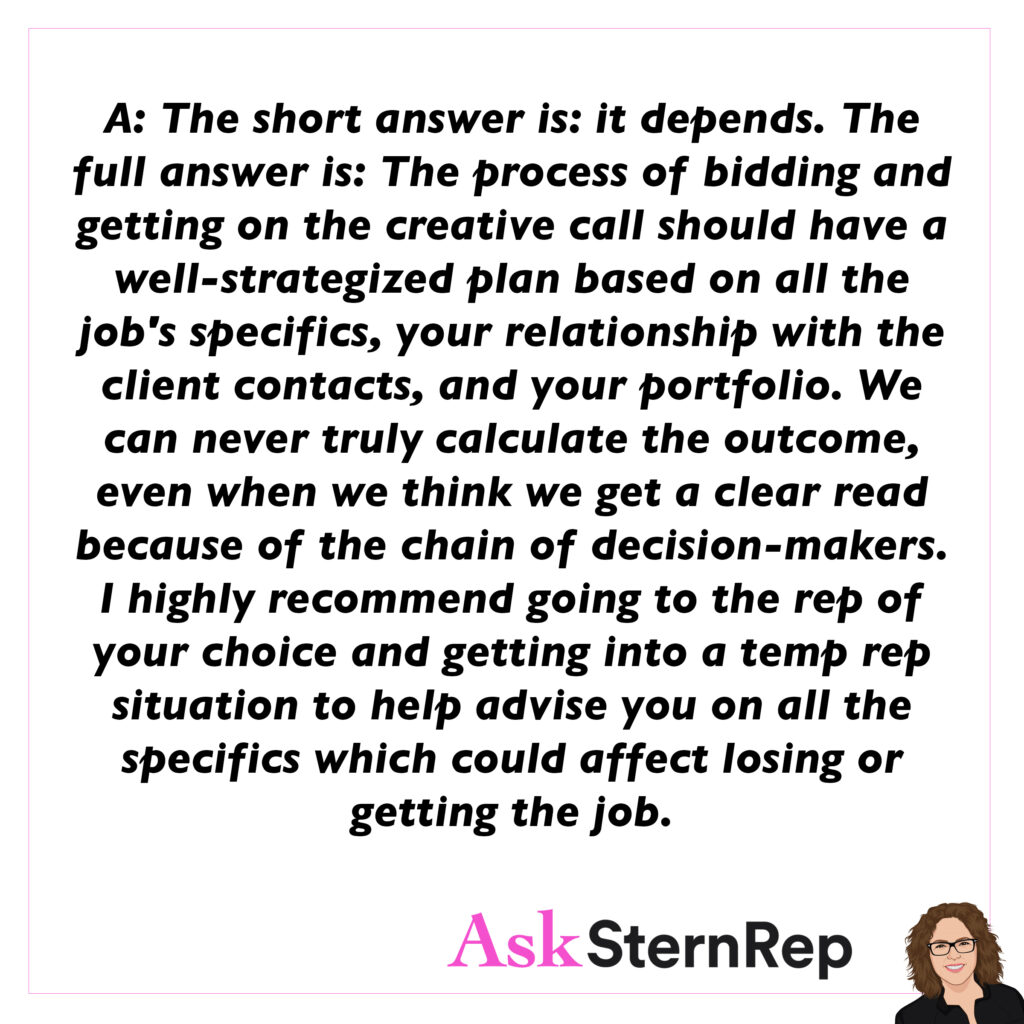
Q:
If a newer photographer makes it to the creative call stage, how honest should they be about what they do and don’t know?
A:
The short answer is: it depends. The full answer is: the process of bidding and getting on the creative call should have a well-strategized plan based on all the job’s specifics, your relationship with the client contacts, and your portfolio. We can never truly calculate the outcome, even when we think we get a clear read because of the chain of decision-makers. I highly recommend going to the rep of your choice and getting into a temp rep situation to help advise you on all the specifics which could affect losing or getting the job.
This is a Presentation
Make sure to use your words wisely and get into good routines to share your ideas on client calls. If you find yourself needing a traditional phrase to finish your zoned-in thoughts, get them ready and mix them up. Saying a phrase more than once will weaken your “director” presentation, and remember, this is a presentation.
Decision Making of Selecting a Photographer
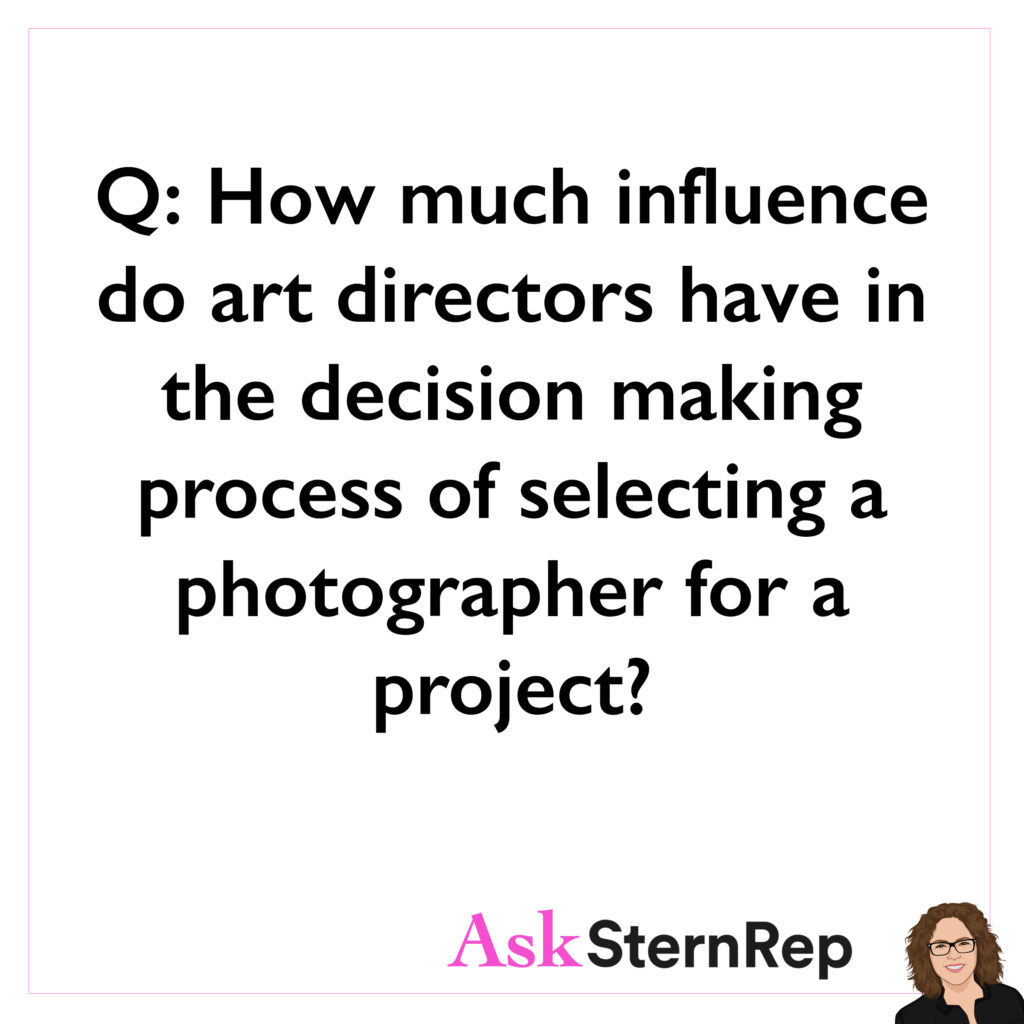

Q:
How much influence do art directors have in the decision making process of selecting a photographer for a project?
A:
The decision-making process of selecting the photographer goes through many twists and turns, mostly involving the producer, creatives (art director/creative directors or designers), and the clients. The producers usually bring in the selection of photographers for the creatives to choose their top 3. The creatives will then inform the producer who is their top choice. Our goal is always to be the ‘recommend’ to the client, but ultimately, the client decides.
Major Bid + Huge Production
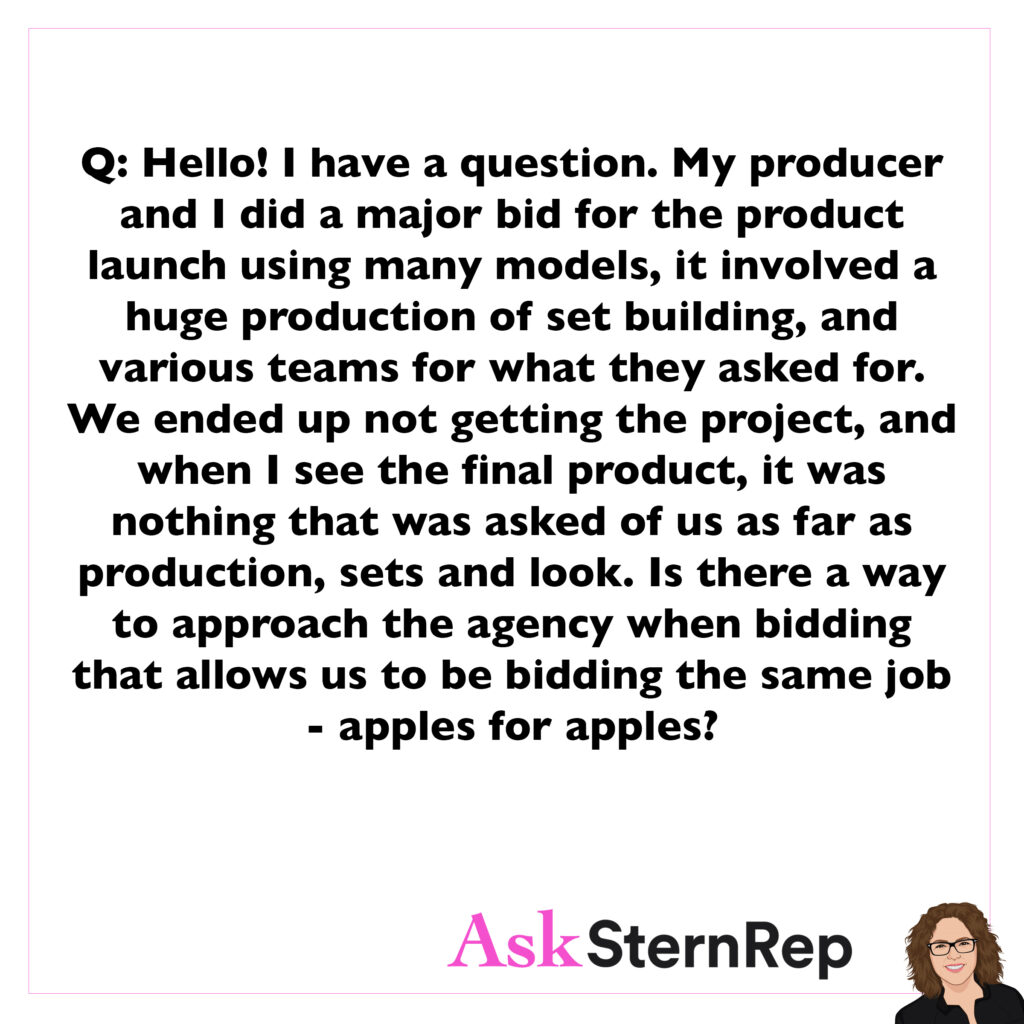
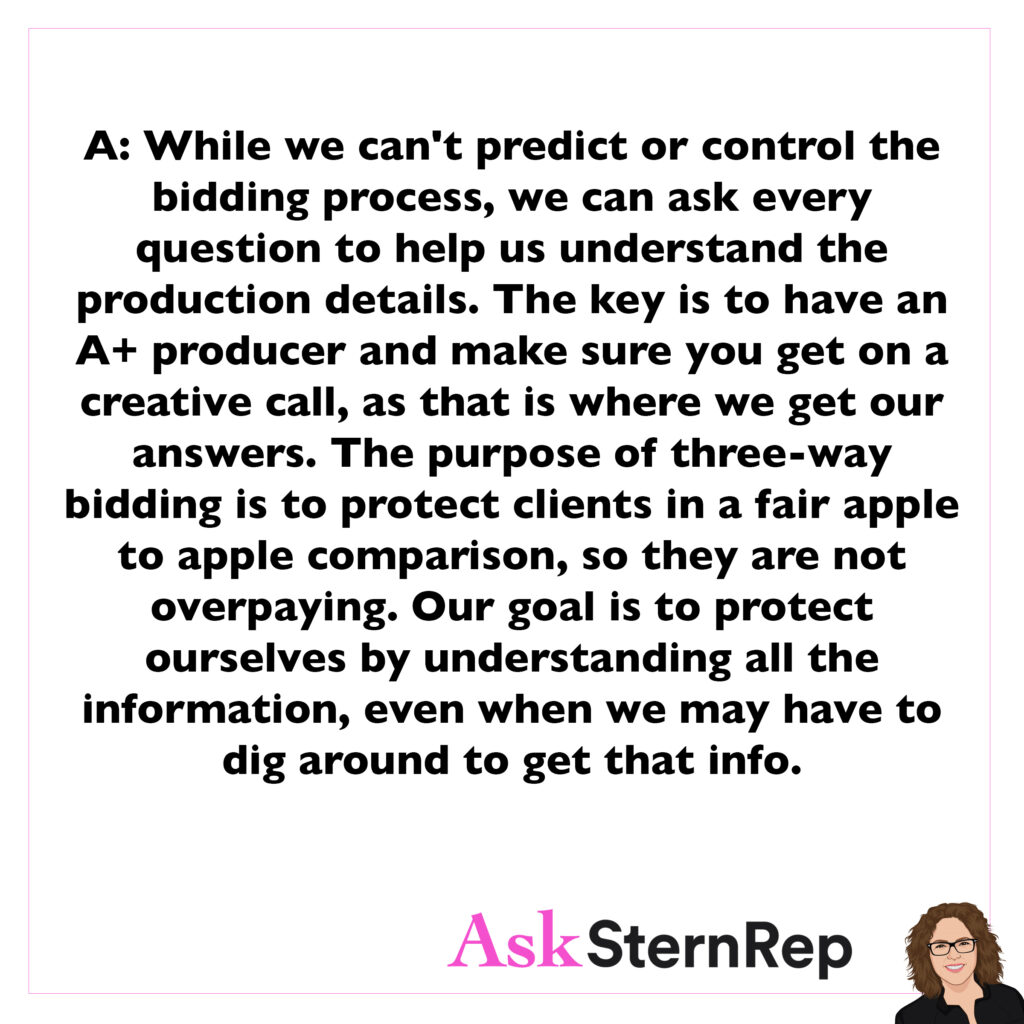
Q:
Hello! I have a question. My producer and I did a major bid for the product launch using many models, it involved a huge production of set building, and various teams for what they asked for. We ended up not getting the project, it was nothing that was asked of us as far as production, sets and look. Is there a way to approach the agency when bidding that allows us to be bidding the same job – apples for apples?
A:
While we can’t predict or control the bidding process, we can ask every question to help us understand the production details. The key is to have an A+ producer and make sure you get on a creative call, as that is where we get our answers. The purpose of three-way bidding is to protect clients in a fair apple to apple comparison, so they are not overpaying. Our goal is to protect ourselves by understanding all the information, even when we may have to dig around to get that info.
Choose Your Words Wisely
Admit it; you are SELLING a product. Approach the conversations with a potential client as a LISTENER, ready to open the pathway to let your true purpose be heard. Choose your words wisely instead of filling any space. Trust me; there won’t be much empty space.
Creative Calls: What You Need to Deliver
What you need to deliver in the creative video call to get the job:
- Enthusiasm
- Unexpected Bonus Ideas
- Throw in a relevant comment or two to reinforce your specialty, which has you on their shortlist for this project
When asked to bid on a job you’ll probably have a creative call. This is more important than ever because it’s video. It used to be a phone call and it wasn’t as personable. They didn’t really get a sense of you as much. Now it really weighs in on their decision who they are going to choose for the job. You have to have your enthusiasm to show your excitement for this job because they’re handing it over to you. They want to know who you are going to be on their set. Once you get the creative deck which is the mood board and the shot list, think about technical ideas because that’s your place in this. What are you going to bring to the job? They want to hear from you. Why exactly did they choose you for this bid? Think about that one thing that separates you and is unique to you for this job. Fit it into the conversation and have a question in mind or a thought, something you’re going to say about a shot that you can relate to and you know that is why they brought you in on this.
Time to Talk
The creative call is the time to give your technical examples of how you will be bringing this project to life. It may seem like the time to listen, but it’s really the time to talk.
The creative call feels like you’re just getting their information so you can do the bid. That’s really not what’s happening. They want to hear from you. Make sure you give examples of what you’re going to do so they can achieve that look they’re going for. Be really specific. Give examples. It’s your time to step forward. That’s really what these calls are about. Be the one on the call giving the information vs just receiving.
